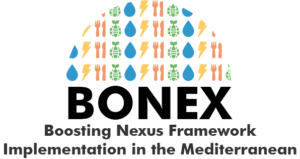Aim of the training
The training will enhance capacity of Egerton educational staff in accessing and using innovative data and tools in the public domain, to analyse crop performance and irrigation management. During the training, university participants will be specifically supported in developing course modules based on the skills gained. To maximize the impact in addressing the need for increased quality of higher education in the agricultural sector, representatives from other institutes, ministries and private sector companies will also be invited. The training will allow the staff to gain advanced skills in working with flying sensors (drones) and satellite-derived data to support agricultural and water-related challenges, such as pests and diseases, water efficiency in agriculture to enhance food security, and drought monitoring. They will acquire insight in and knowledge on analyzing the performance of crops, making the right intervention decisions and giving irrigation advice. For public sector representatives, the training objective is to obtain skills that can be directly and sustainably implemented in their respective organizations.
Overall, the Kenyan society at large will benefit from improved food security provided by well-educated agricultural researchers and professionals. This project forms an important step in the capacity building strategy as it focuses on strengthening the universities and preparing them to provide high quality education to the future generation agronomists and agricultural managers, as well as upgrading the knowledge of current professionals.
The training costs of four stages: an online training course, followed by an in-country training program, symposium and post-training support.
Stage 1: eTraining course
The first stage involved a weekly online training course that will start in January 2021, with a total of six sessions in six weeks. Participants will be consisting of University and TVET faculty members, university students, PhD candidates, researchers, Kenya Agricultural & Livestock Research Organization (KALRO) staff members, Agriculture Extension Staff from the County Government who are already involved in agricultural research and training and other private sector partners. Staff members from the university will be those that are involved in teaching agronomy, horticulture, agriculture engineering and agriculture extension courses and programs, i.e., soil, nutrient and water management, dryland farming, irrigated agriculture and crop protection. Non-university attendants will be technical staff who are close to the decision makers within their organizations. This will enhance the impact of the training by embedding the use of flying sensor and satellite-derived data for agriculture within these organizations and make sure that Kenya will pursue its activities in making use of this kind of information.
This first stage of the training course will be online and will focus on:
- Real Water Savings in Agricultural Systems including potential field interventions
- The use of WAPOR to access remotely sensed derived data
- The use of flying sensors (drones) in agriculture
The course will end with a test and evaluation and graduates will receive a certificate.
Stage 2: Targeted in-country training
After the first stage training a second in-country training will take place with a smaller group, focusing on the use of drones in agriculture. Here a selected group of 12 to 18 members will be trained. Focus will be on staff with lecturing responsibilities, to ensure impact on higher education provision and transfer of the new skills to students.
The in-depth training will consist of:
- Operating flying sensors manually and automatic, the processing of the collected data using open source software, interpretation and the subsequent decision making (recommendations to increase productivity) for (smallholder) farmers and actors
- Use satellite derived (precipitation) products to run crop growth models to provide advice on when and how much to irrigate in agricultural fields
Participants will work on hands-on exercises related to crop performance analyses, water demands and crop growth modelling. Application of the new skills will be further stimulated by assigning the participants clear, tailor-made goals at the end of the second training session, to be worked on during the distant-support period.
Stage 3: Symposium/knowledge sharing
Right after the second training session, a symposium will be organized for a larger audience including the superiors/managers (who most of the times are the final decision makers) of the training participants and representatives of similar organizations. During this knowledge sharing event, trainees and trainers will actively provide contributions to showcase the newly gained skills and their added value to the respective institutions and the Kenyan agricultural sector in general. By acquainting the responsible decision makers in these organizations with the potential applications of flying sensor and satellite-derived data relevant to them, this event will be crucial in ensuring a sustainable impact of the TMT.
Stage 4: Post-training support
In this period, progress will be actively monitored and the trainers will provide post-training support to the participants. The support will be both remotely (e.g. through Skype) by the Dutch training providers but also in-person by ThirdEye Kenya staff visiting the participants for Q&A sessions and to evaluate the implementation of the skills they obtained.
 The Mediterranean Region is facing growing challenges to ensure food and water supply as countries experience increasing demand and decreasing availability of natural resources. The nexus approach aims at managing and leveraging synergies across sectors with an efficient and integrated management of the Water, Energy, Food, and Ecosystems Nexus (WEFE).
The Mediterranean Region is facing growing challenges to ensure food and water supply as countries experience increasing demand and decreasing availability of natural resources. The nexus approach aims at managing and leveraging synergies across sectors with an efficient and integrated management of the Water, Energy, Food, and Ecosystems Nexus (WEFE).